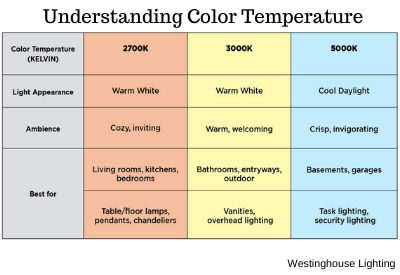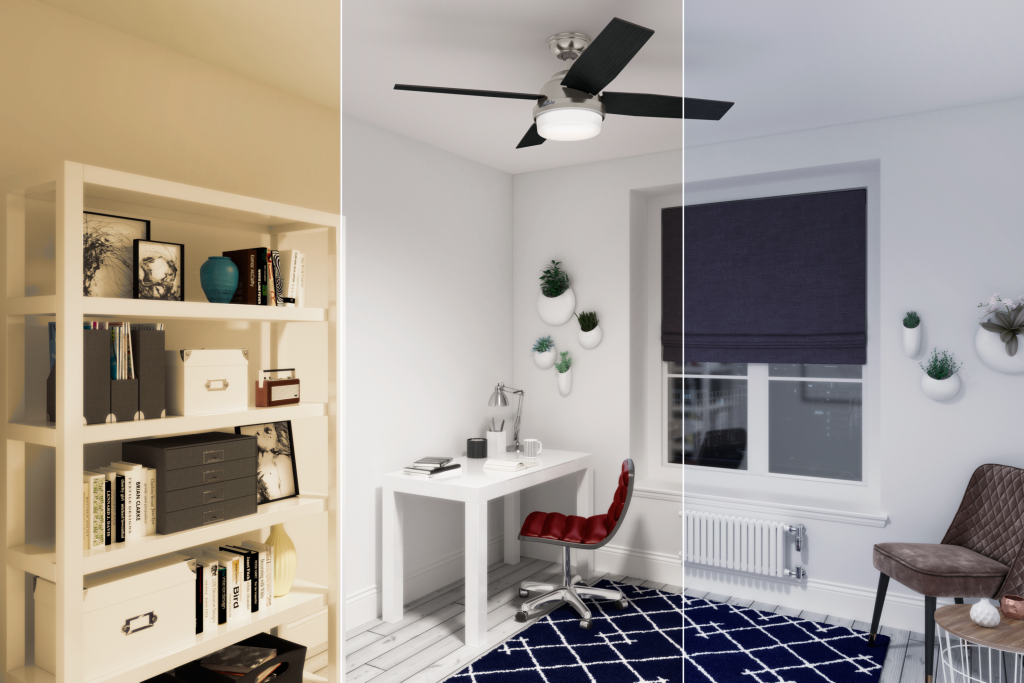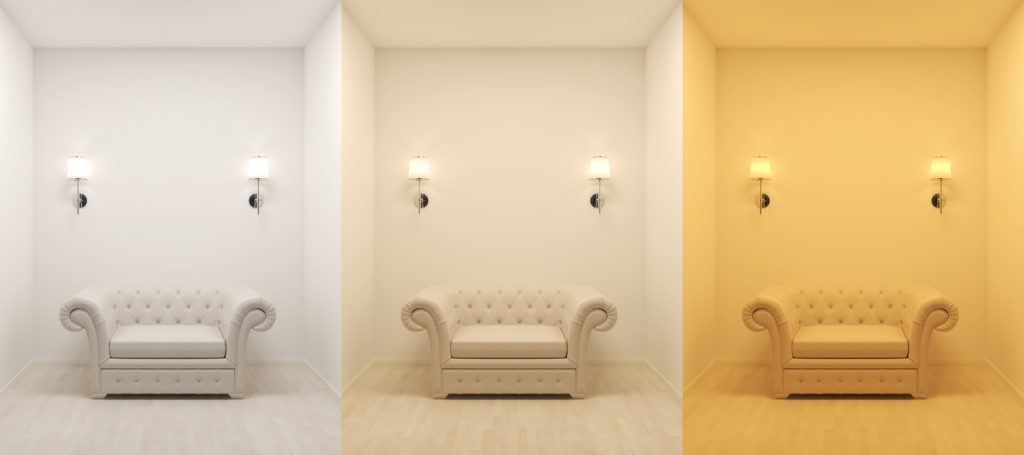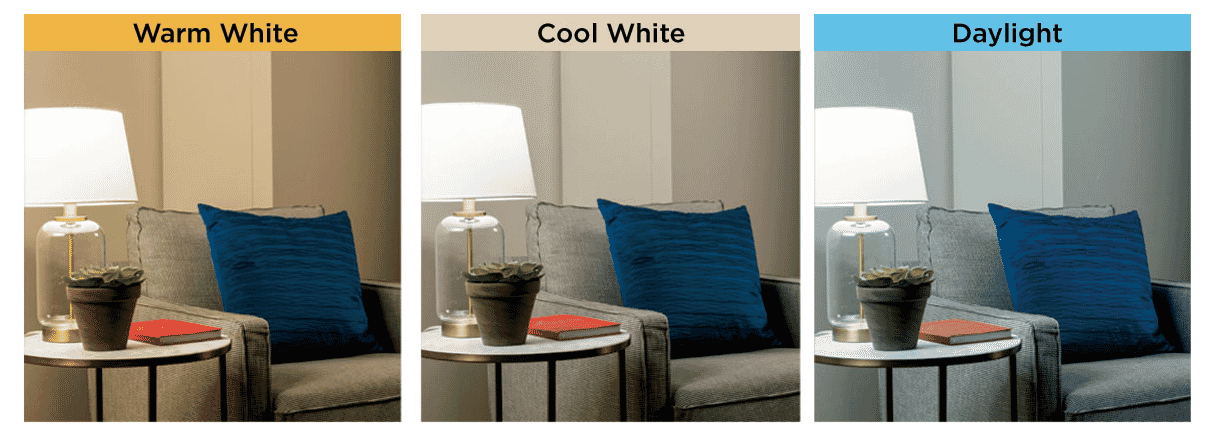When we hear the word “temperature,” most people immediately think of our sense of touch and how something feels — warm, hot, or cold. Lighting, however, is different. “Color temperature” in lighting describes how the light “looks” and subsequently affects us on a psychological level.
Light bulb manufacturer Bulbrite defines color temperature as a numerical measurement of the color appearance of a light source measured in degrees Kelvin (K), which run from 1,000 to 10,000. “Color temperature also refers to the way color groups are perceived — a low color temperature implies warmer color (more yellow/red) light while high color temperature implies a cooler light (more blue),” according to Bulbrite.
“Typically, Kelvin temperatures for commercial and residential lighting applications fall somewhere on a scale from 2000K to 6500K,” notes light bulb manufacturer Westinghouse Lighting, adding, “A light bulb’s color temperature lets us know what the look and feel of the light produced will be.”

At 2000K to 3000K, the light color is referred to as “warm white” and can look amber to yellowish white; 3100K and 4500K is considered “cool white” and appears as a more neutral white; and 4500K to 5000K and higher is called a “daylight” color temperature, which closely resembles natural sunlight and has a bluish white tint.
Recently, lighting technology has evolved even further with the introduction of “tunable” white light. With color-tunable or tunable-white technology, manufacturers can offer light bulbs and lighting fixtures that have the ability to easily change the color temperature through a remote control or switch. Previously, homeowners who wanted a different color temperature in a room would have to replace the entire light bulb with one in another color temperature and then switch it again if they wanted it brighter, whiter or softer and warmer.
Why does having this technology matter? Just think of the flexibility! With a tunable white/color-tuning light bulb or lighting fixture you can change the amount of light and the color, plus alter how people feel in that space.

For example, in the living room, color-tuning fixtures could be bright white when cleaning is taking place or tasks such as reading or working on a laptop and then dimmed down and changed to a warmer color for movie watching in the evening or setting a cozy, comfortable vibe when entertaining. The same is true for large kitchens that not only serve the functional purpose of meal prep and cooking, but also have become popular as casual dining or bar areas.
When selecting lighting fixtures and light bulbs for your next room renovation, consider those that offer the convenience and flexibility of color-tuning to maximize your enjoyment of that space.






February 8, 2023
[…] If you want to create a warm, cozy kitchen, try using warm white LED bulbs. To find warm white bulbs, check the labels – they will specify a warm color temperature, such as 2700 K. Learn more about color temperatures here. […]